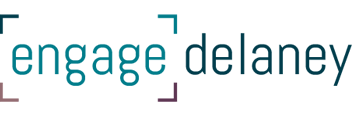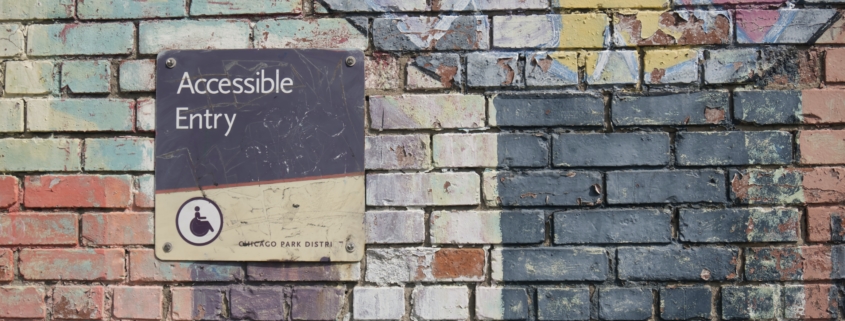Accessible Engagement
by Brittany Mason, Specialist, Engagement + Communications
When people think of accessibility, they may think first of accessible structures such as ramps or automatic doors. What I have learned is, accessibility is so much more than that. It is about accessible engagement processes, as well as physical considerations. When we are planning engagement processes, accessibility needs to be included – from scheduling to session design to reporting. If we design processes that are not accessible, we miss out on valuable input from persons with disabilities, and we are at risk of making decisions that are not as appropriate or sustainable as they could be.
This year, I led a project to learn from persons with disabilities on how to improve accessibility to government services. While the subject matter wasn’t about improving engagement accessibility, so much of what I learned informed our engagement process and, hopefully, made providing input into the process more accessible for persons with disabilities across Canada.
With that said, here are some of the top things I learned about accessibility throughout this process:
1. Include persons with disabilities in planning.
Look, we’re only human, and there’s no way we can know everything. But, that said, it is our duty as engagement professionals to continue to use informed humility – to educate ourselves as much as we can but be humble about the things we don’t know or can’t do. It is, furthermore, important to include, and pay, subject matter experts in accessibility as you plan your engagement processes. There are so many knowledgeable people out there with valuable experience to share.
With that in mind, it is important to include persons with disabilities early on in your planning, so you can ensure your processes are accessible from the start. For example, you might learn that having a virtual session with a PowerPoint slide deck is not accessible to those who are Blind or who experience vision impairment or low vision. You might realize that if you are planning an in-person event, you need to ensure physical accessibility like handrails and ramps or consider distance/experience from the parking lot to the entrance doors. You also should ensure there is a strict no-scent policy, or even investigate the cleaning products used at your venue, as these could prevent persons experiencing multiple chemical sensitivity from attending.
2. Budget for, and hire, vendors to make your processes more accessible.
Planning your engagement with accessibility in mind is crucial, and it may have implications on how you implement your processes. If persons from the Deaf, Deaf-Blind, and Hard of Hearing Community are attending, you will want to provide interpreters in American Sign Language (ASL) or langue des signes Québécoise (LSQ), intervenors (interpreters for the Deaf-Blind), and Communication Access Realtime Translation (CART) captioning for virtual sessions. You will want to provide information (and your final report) in ASL and LSQ and ensure any online content you create is at the very least compliant with Web Content Accessibility Guidelines (WCAG) 2.1. For these services and others, you will need to hire accessibility organizations.
It is key that you prepare for these ahead of time, allocate an appropriate budget, and provide yourself enough runway to accommodate the extra time providing these services may require. Many of these services are in high demand, so it’s best to get the ball rolling early. Often organizations will also share if they prioritize hiring persons with disabilities – an important consideration!
3. Provide options allows more people to participate.
Further to providing accessibility accommodations, it is also important to recognize that persons with disabilities are not a monolith. What will work for one person, may not work for another. So, to reach as many people as possible, make sure you provide options for participating in your process. Scheduled virtual sessions, for example, may work better for those who experience physical disabilities and who require a support person to get their computer and Zoom set up. While providing questions ahead of time isn’t always common practice, it can make a world of difference for someone who experiences a cognitive disability, by giving them enough time to review, reflect, and prepare their responses.
Consider providing accessible in-person, virtual, and phone options. This might be rooted in the option for direct connection with a project contact through phone, text, or on-demand real time virtual chat or video call. Plan to, and ensure participants know that you will, seek to understand if they need accommodations to ensure they will have impactful ways of engaging
Above all, having awareness of accessibility and respect for persons with disabilities is paramount when planning accessible engagement processes. Many of our processes are ableist in nature, but that doesn’t mean they have to stay that way. Even the language we use can be ableist; for example, a “What We Heard Report” may not resonate with someone who is Deaf, Deaf-Blind, or Hard of Hearing. The Delaney team has shared previously about the importance of safer language, and it is essential to audit (or hire someone to audit) your key messages and proof points to ensure your materials are inclusive and set the groundwork for building trust. If we want to truly make Canada more accessible, we need to learn from those who have experienced barriers. By including persons with disabilities in planning, hiring accessibility vendors, and providing multiple options for participation, we can ensure our engagement processes are accessible to persons with disabilities and we can learn from their valuable expertise and experience.




